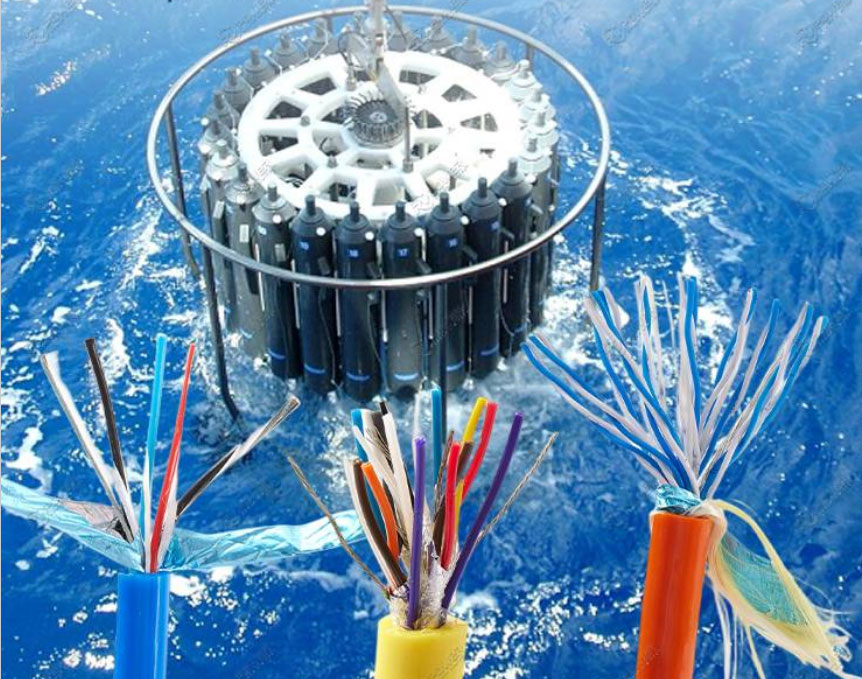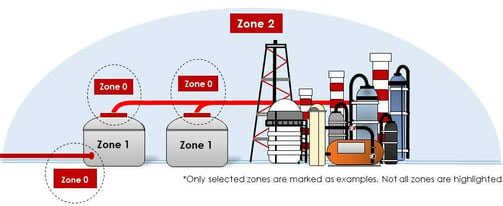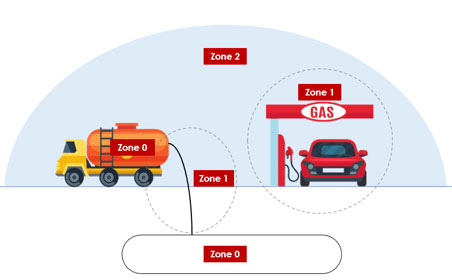
The oil and gas industry is hazardous as it is prone to explosions that occur in the presence of 3 substances: flammable gas or dust, oxygen, and an ignition source. Hence, to prevent explosions from occurring, we need to ensure that these 3 substances are not present at the same time. Conversely, as both flammable gas and dust are indispensable in the oil and gas industry, and oxygen is a necessity, the determining factor lies in the prevention of ignition sources.
There are different types of hazardous areas and they are classified into zones based on their risk factors. Here we introduce the 3 different zones: Zone 0, Zone 1, and Zone 2.The hazardous areas are classified into zones based on their likelihood and duration of occurrence of an explosive atmosphere.
The zones are:

